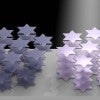
Ambient light alters refraction in 2D material
Microscopic crystals in tantalum disulfide have a starring role in what could become a hit for 3D displays, virtual reality and even self-driving vehicles.

Ambient light alters refraction in 2D material
Microscopic crystals in tantalum disulfide have a starring role in what could become a hit for 3D displays, virtual reality and even self-driving vehicles.
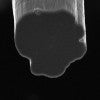
No limit yet for carbon nanotube fibers
Rice University researchers report advances in their quest to make the best carbon nanotube fibers for industry.
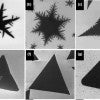
Study: Mapping crystal shapes could fast-track 2D materials
Materials scientists at Rice University and the University of Pennsylvania are calling for a collective, global effort to fast-track the mass production of 2D materials like graphene and molybdenum disulfide.

Purifying water with a partly coated gold nanoparticle
Rice's Naomi Halas has collaborated with Yale University engineers on the creation of a light-activated nanoparticle for clearing water of pollutants. The research is part of an effort by NEWT, the Rice-based Nanosystems Engineering Research Center for Nanotechnology-Enabled Water Treatment.
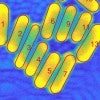
New tool helps nanorods stand out
Rice scientists introduce an open-source method to simplify nanoparticle analysis using scanning electron microscope images.

Three Rice students receive Hertz Fellowships
The Hertz Fellowship is as prestigious as it is selective: Only 16 fellows each year are admitted to the program, which funds five years of graduate research and offers lifelong professional support through the Fannie and John Hertz Foundation.
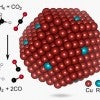
Rice University engineers have created a light-powered nanoparticle that could shrink the carbon footprint of syngas producers.

Nanotech pioneer, Nobel laureate Richard Smalley dead at 62
Nobel laureate Richard Smalley, co-discoverer of the buckyball, died from cancer in Houston. He was 62.